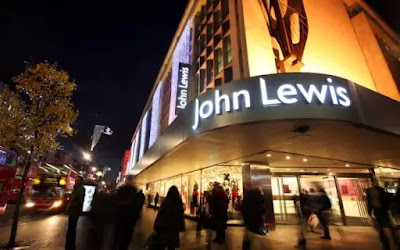The new boss of John Lewis has set out her stall for the future of the 153-year-old company for the first time and outlined the company’s ambition to sell more own brand products, increase the number of shop services and overhaul the workforce - which could result in more job losses.
Paula Nickolds, the retailer's first female boss, said that the retailer was battling against a “volatile market and profound structural changes” across the industry, uncertain consumer behaviour and increased costs from wage rises and the weaker pound.
The John Lewis lifer, who started at the chain 22 years ago in the haberdashery department, quickly ruled out the need for shop closures but said that after a further three scheduled stores are built the company was unlikely to open any more.
Ms Nickolds also took the opportunity to correct earlier reports that she would be scrapping haberdashery departments in favour of prosecco bars.
John Lewis currently has 48 stores with a new Oxford store scheduled for later this year and openings in Westfield White City and Cheltenham in 2018. Ms Nickolds revealed that new stores cost the company between £30m and £35m but stressed that the role of shops was changing due to the boom in online shopping, which John Lewis expects will account for half of all its sales by 2020.
As a result, Ms Nickolds said that John Lewis was focusing on the “catchment area” of sales, rather than whether purchases were done online or in shops as the lines blurred between whether people browsed in store and bought from their mobile phones.
In numbers | John Lewis
48 Number of John Lewis stores
91 Years John Lewis has used the slogan Never Knowingly Undersold
1864 John Lewis began with its first store on Oxford Street
30,000 Approximate number of 'Partners'
Following on from the company's recent Modern Rarity upmarket fashion launch and a foray into own-brand denim with its new And/Or collection, Ms Nickolds said her ambition was to have 50pc of all the products John Lewis sold be own brand or exclusive to the department store. She revealed that sales of John Lewis’s own homeware collection would likely hit £1bn by next year.
Ms Nickolds, who was officially promoted to the role at the start of the year has taken over from Andy Street who abruptly quit last October in a bid to become the the mayor of the West Midlands.
The John Lewis boss said that she was aware of the “weight and expectation” on her appointment before adding that she had inherited a “business in good shape but one that needs to change”.
She stressed that her two biggest concerns following the signing of Article 50 were “trading relations internationally and the experience for our EU nationals working in John Lewis".
However, she highlighted there was an opportunity to increase UK manufacturing to take advantage of a weaker pound. John Lewis already has a factory in Lancashire which makes the bulk of its sofa ranges.
Ms Nickolds said that to combat increased costs the company would need to be more productive, which would include changes to the way some of John Lewis’s 30,000 partners worked and spell more job losses. Ms Nickolds declined to say how many job cuts there would be or when.
Last month the retailer announced there would be 387 redundancies as part of its plans to revamp its cafes and its carpet and curtain fitting.
“Retail will be a structurally less profitable operation than it was", Ms Nickolds said.
“Every role will have to be really clear about the value it adds to the customer," she said. “Where we can automate processes by removing administrative or routine work to better serve customers we will do so.”
In January, John Lewis slashed its highly coveted staff bonus to 6pc of salary - the lowest level since 1954.
Ms Nickolds shrugged off perennial criticism that department stores were outdated and comparisons to struggling US peers. “I am sure that there is too much retail capacity in the UK... but the department store sector is quite different (in America) than in the UK.”




No comments:
Post a Comment